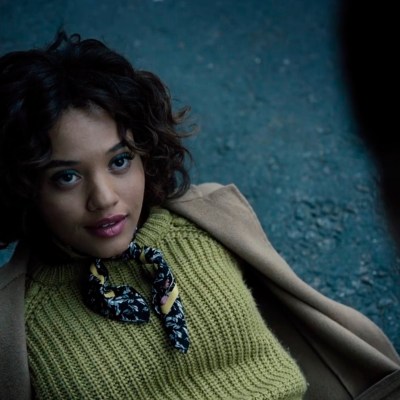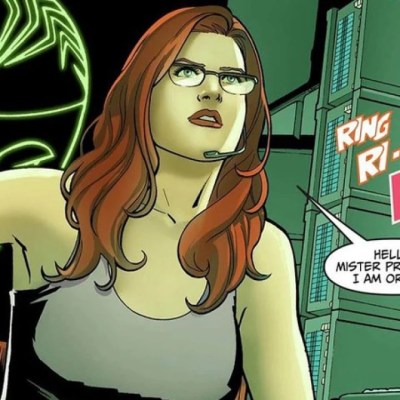Since early promotion for Wonder Woman 1984, one look has captured everyone’s attention: Diana’s golden suit of armor, with its fantastical set of wings. The Gal Gadot incarnation of Wonder Woman has broken the grimdark doom-and-gloom black leather superhero look from her very first appearance in Batman v. Supermam: Dawn of Justice, and she’s only become more colorful and bright with each successive movie, including Wonder Woman 1984’s rainbow poster aesthetic that showed off the wing-less version of the armor.
Dubbed her Golden Eagle Armor, this look originated in the comics and it’s exciting to see it come to life on the big screen, especially the way Diana sheds the wings so fluidly. It’s the kind of move we often see depicted on the page but is hard to imagine translated to a grounded live-action depiction, but director Patty Jenkins and her team found a way that’s mysterious, magical, and a complete showstopper. And by looking to its comics origin and how it has been used to show Diana’s intentions, there might be some clues about what her golden eagle armor will mean for Wonder Woman 1984.
The golden eagle armor debuted in 1996’s Elsewords: Kingdom Come by Alex Ross and Mark Waid. In this story arc, Wonder Woman, Superman and other heroes take on a dystopian near future, leading Diana to bust out a brand-new suit, along with a shield and a sword so sharp it can pierce Superman’s skin, made by the god Hephaestus. If that hits a little too close to home, take comfort in the fact that live-action Diana’s maiden voyage in the suit is weirdly similar, so maybe Wonder Woman will be what turns this godforsaken year around.
In this story, which has many parallels to Marvel’s Civil War, a new generation of metahumans and superheroes has essentially taken over the planet, and while they’ve eliminated “villains” in the classic sense, their disregard for human civilians has made them a constant hazard, something they either don’t see or change. Superman and a number of other classic heroes retreated from the world after a low-level clash between two such powered people unnecessarily escalated to the point that all of Kansas was wiped off the map – and everyone in it.
Diana convinces Supes to stop farming shirtless in his overalls and get the world back on track, which means taking on the rogue metahumans. Some get in line, but others…That’s when she decided to make their own gulag (yes, they call it that) and puts on the armor, declaring war.
Kal repeatedly worries about her – the Amazons had banished her from Paradise island and stripped her of her heritage and royal title after the Kansas incident, saying she wasn’t making the World of Man a better place – and her new, more violent direction. Standing in sharp contrast to the complicated figure we saw in the first Wonder Woman movie, who battled but only as a way to end violence, this Wonder Woman put on her golden suit to be a soldier, to go to war not just to end war, but to end war by any means necessary. She eventually comes around to the Wonder Woman we know and love, but the symbolism of the armor in its first outing is notable.
It’s worth noting that as an Elseworlds story, Kingdom Come takes place outside normal DC continuity and thus isn’t considered canon. Still, it’s a worthwhile way to explore an aspect of her character that we don’t always see, a very human impulse toward compassion fatigue and become overwhelmed by all the fighting and to give in to the idea of escalating violence. Might the Diana of Wonder Woman 1984 be experiencing something similar when she dons her glimmering armor?
In 1999 the golden eagle armor came to Wonder Woman’s main continuity – albeit with a golden axe instead of the sword – in the four-book Devastation arc, where Diana faces a mysterious foe who has the dark version of her same powers. Created by Cronos, father of Zeus, Devastation manipulates mortals into violence, starting up a war between the states, the National Guard, and separatists/doomsday preppers. It is, once again, #tooreal, when a military commander complains of a president who “cannot control his personal urges” and escalates the country and the world to war.
Read more
Unlike Kingdom Come, however, when Diana puts on her armor, it’s to stop the various warring groups from killing one another. In a sequence that feels very much in line with the Wonder Woman we’ve seen on the big screen, she argues with Devastation (who just wants everyone to destroy one another) that each human life is precious, saying that, “to lose on life is to lose the world.”
There’s another reason Diana wears her armor: she’s injured. It’s rare, but Wonder Woman can get hurt. Since Devastation is also the child of gods, she’s able to seriously harm her, repeatedly sending her to a Sphinx for medical treatment. She’s so injured that the sphinx tells her not to fight and gods wonder if they should intervene on her behalf, but Devastation taunts her about hiding behind the armor, and Diana sheds it, pieces falling in a sequence that might have inspired the supremely cool wings-falling look in the trailer for Wonder Woman 1984.
Since then, Diana has worn her golden eagle armor on a number of occasions, whenever she’s gearing up for the most serious of battles. In 2001’s Our Worlds at War, Diana busted out the armor to fight Imperiex, who was trying to decimate the universe – and her mother Hippolyta wore her own version as well. Two other Amazons wore silver and bronze versions of the eagle armor in Gail Simon’s 2009 story arc Rise of an Olympian, where they faced off against Genocide, an emissary of Ares.
While the armor has always symbolized battle, it has often meant more as a metaphor for the way Diana steels herself against a larger evil plaguing humanity. Looking ahead to the new film, Wonder Woman could be taking on any number of insidious human failings throughout the Cold War – suspicion of our own citizens in the form of the red menace, surveillance, the “greed is good” mentality, the rise of cocaine, even HIV.
Whatever the reason for Diana’s golden eagle armor in Wonder Woman 1984, surely it means she’s facing a mighty foe.


